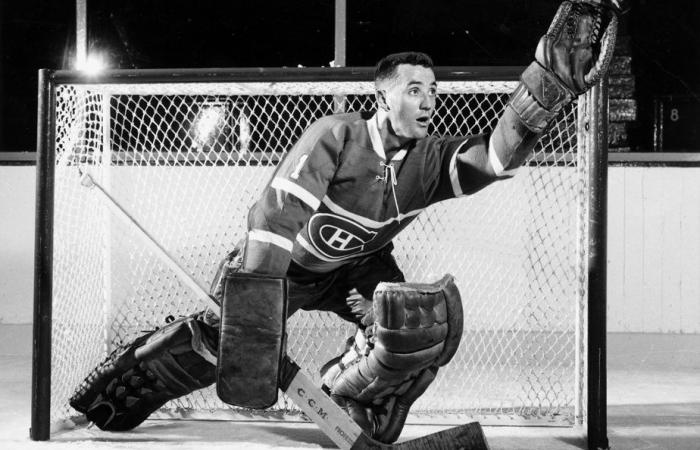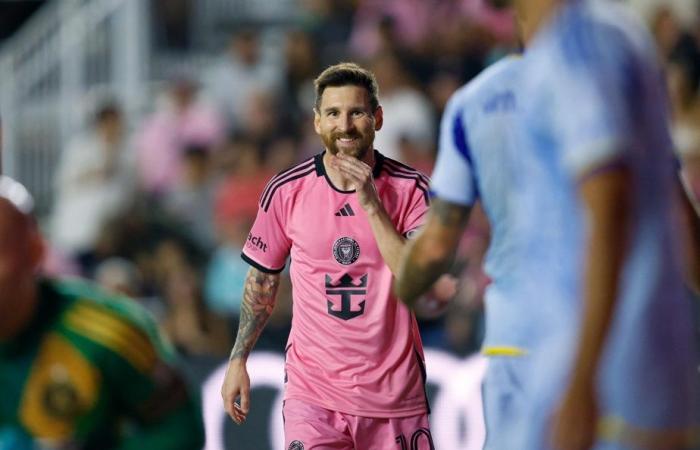Every week, journalists from the Sports team answer your questions.
Posted at 1:36 a.m.
Updated at 6:00 a.m.
Submit your questions
Jacques Plante, inspector
Can you confirm that Jacques Plante discovered that the visitors’ goal at Maple Leaf Gardens was higher than the home team’s net? If this is the case, I imagine that this discovery caused a lot of noise at the time, making the Maple Leafs look like cheaters…
Steve Boivin
Response from Guillaume Lefrançois:
In fact, it was in Chicago, in 1963, that Jacques Plante discovered the pot aux roses. According to a newspaper article from the time, unearthed by NHL.com colleague Dave Stubbs, the nets were 3’10” high, rather than 4′. However, the article does not specify that it was a single net that was of this height. It therefore seems that the size of the goals generally favored the Blackhawks goaltenders in terms of their goals allowed average.
History of ceilings
PHOTO KIM KLEMENT, ARCHIVES USA TODAY SPORTS
Nikita Kucherov, du Lightning de Tampa Bay
Why are teams allowed to exceed the salary cap during the playoffs? When a club wins the Stanley Cup with this tactic, I don’t find it very professional. It even makes it seem like he won by cheating.
Patrick Caron
Response from Mathias Brunet:
The Vegas Golden Knights did it in recent seasons with Mark Stone and the Tampa Bay Lightning with Nikita Kucherov a few years ago. They “seemed” to intentionally keep these players on the long-term injured list during the season, inflated their payroll at the trade deadline and the injured player in question magically reappeared in the playoffs. This was not cheating in the literal sense, since these organizations were operating according to the rules, but they do indeed give the impression of cheating. The NHL needs to look into this issue, a question of ethics and fairness, in my opinion.
How many retreats per year?

PHOTO OLIVIER JEAN, LA PRESSE ARCHIVES
Patrice Bergeron
I would like to know if we know the number of players who retire from the NHL at the end of each season.
Jean T.
Response from Simon-Olivier Lorange:
Every year, 20 to 30 players announce their retirement. The attention given to these announcements obviously varies depending on the player concerned, the market in which he played and the time of year. For example, by retiring at the height of his glory, after two decades with the Boston Bruins, and in the middle of summer to boot, Patrice Bergeron saw all the league’s spotlights turn on him when he hung up his skates in 2023. At the other end of the spectrum, on October 20, Bryan Little ended his career in almost complete anonymity, having, moreover, not played since November 2019. This reminds us that even if it is certain that a player will never approach an ice rink again, he is not officially retired until he has made it official on the administrative level.
The consequence of long hair in athletics

PHOTO ASHLEY LANDIS, ARCHIVES ASSOCIATED PRESS
American Sha’Carri Richardson
For 100m and 200m runners, it’s all about hundredths of a second for a place in the final or for a medal. When a woman runs with long hair or a ponytail, does it add one or a few hundredths of a second to her time?
Bruno Lachance
Response from Katherine Harvey-Pinard:
In fact, for both men and women, time stops the moment the front of an athlete’s chest crosses the finish line. This is why athletes project themselves forward when arriving at the line. In this sense, hair doesn’t change anything. However, according to my quick research, there are studies on the impact of long hair on an athlete’s performance. A study carried out last summer by researchers at Heriot-Watt University in Edinburgh established that “long and curly” hair, combined with “loose clothing”, could add up to 0.07 seconds to time of an athlete. “The difference is enough to lose a gold medal,” it says.
Who takes the penalty?

PHOTO CHRIS ARJOON, ARCHIVES AGENCE FRANCE-PRESSE
Lionel Messi
My question is more of a comment, but perhaps there is an explanation! Hypothesis: in Miami, Lionel Messi ends a season with 20 goals to his credit, but 7 of them from a direct hit (penalty throw). We always call on the team’s top scorer to score this goal. Wouldn’t it be more logical to award this shot to the player who was the victim of the foul, like in hockey? What is a little annoying is that the player who receives the Golden Boot owes it in large part to his direct shots, which disadvantages the player who may have scored more goals in a conventional way. Maybe there is no explanation. It’s up to you to enlighten me and thank you in advance.
Yves Fortier
Response from Jean-François Téotonio:
In soccer, there is no rule requiring teams to use the player who was the victim of the initial foul for the subsequent free kick or penalty. The training therefore chooses to send their specialist in the subject. Should the rule be changed? It’s a bit like asking pitchers to hit in baseball. I think the spectators are doing well not having to anticipate a free kick from Samuel Piette, without disrespecting him: he would be the first to tell you that it is not his strength. Yes, Messi is a master at taking free kicks, but the Golden Boot winner is not always a set-play artist. In 2023, Denis Bouanga (LAFC) won this individual trophy by scoring no goals from free kicks, and only 3 from penalties, while he scored 20 in total.










